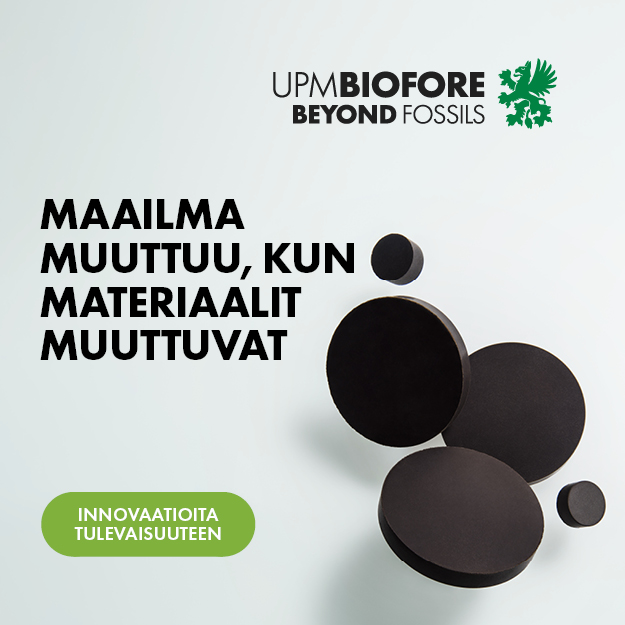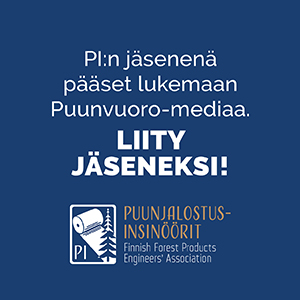Ali Harlin, Research Professor at VTT Technical Research Centre of Finland, studies new applications of biomaterials, such as the recyclability of textiles and new kinds of packaging materials.
Harlin says that, regarding textiles, Finland is making progress with three spearheading technologies.
The project that has progressed furthest out of these three involves carbamate technology, which VTT licensed to Infinited Fiber Company.
“The technology is used to manufacture cotton-like fibres, by making recycled or virgin cellulose urea-soluble.”
In the BioCelSol technology, cellulose is modified with the help of enzymes. Whether the technology producing soft fibres is adaptable for an industrial scale and particularly for hygiene textiles is now being investigated.
The third spearhead in terms of sulphur-free production is Ioncell-F developed by Aalto University on the basis of an ionic solvent. Scaling the technology to an industrial scale will nevertheless take some time, and the results so far include only a few small pieces of clothing.
“The industrial process is not complete yet, but the technology will be really good. The material is also very strong, because the ionic solvent allows for dissolving a lot of cellulose in the mass that promotes the fibre’s drawing.”
Fibre yarn thread is already under production in Finland.
“Spinnova makes thread directly from wood fibre. On the other hand, this product competes more with wool than cotton.”
Materials that replace plastic are also being developed.
“We’re developing an entirely cellulose-based plastic film to replace multi-layered plastics in packages,” says Harlin.
Future products come from the woods
The potential of pulp textiles has to do with a rapid increase in the demand for fibres, as well as the challenges of dominant textiles such as cotton and polyester.
“Cotton is ecologically heavy to grow and polyester is oil-based. As a material, its the second on the list when talking about the sources of microplastics.
Yet we still need to wear clothes and package goods.
“The products of the future are quite literally growing in our forests.”
Finnish forest industry companies are extremely interested in new ways to make use of cellulose. Metsä Fibre and Stora Enso, among others, are involved in the development work of textile manufacturing.
These days, dissolving pulp is mainly used as a raw material for viscose, but the challenge lies in the compounds used in the production. In viscose processes, the dissolution of wood or pulp fibres takes place by use of the harmful carbon disulphide.
Stora Enso has made a substantial investment in dissolving pulp in the Enocell mill at Uimaharju, which is why it is also interested in a sustainably competitive technology in the production of a raw textile material. Nowadays, Enocell’s production is exported to China.
The well-know cellulose
More has been found out about the deep structure of cellulose during the past ten years than during the preceding hundred. The pace of discoveries is still picking up speed.
“Thanks to the accumulated knowledge of materials, the processing of products launches into entirely new, even unpredictable paths and even surprising replacements will be found.”
The accumulation of data is the result of long-term work.
“Nothing is developed from thin air. Cellulose has been studied in Finnish universities and at VTT, and the research tradition spans generations. There aren’t many concentrations of research data on pulp similar to this. There a few in the United States, in addition to which there is one in Stockholm and one in Japan.”
On the level of production technology, the change will occur in the near future. For the impatient among us, Harlin says that the wider market entry of the new products has to do with the time perspective, above all.
“The card of current investments has been played by 2025 at latest,” says Harlin, referring to a time when the boost to be gained from the current investments has come and gone.
“There are already plans underway concerned with how the processing of wood and pulp into special products will work in Finland in the 2030s.”
According to Harlin, the future will also bring along changes to the production structure of the forest industry.
“Many more ecosystems and often even smaller production units will be born, since many new products with added value are not volume products comparable to the current production of pulp. Good examples already include Kotkamills and their plastic-free cup packaging boards, or Paptic, which manufactures a paper material reminiscent of plastic.”
Still, there will continue to be room for large volumes even in the future. Wood-based textiles and plastic replacements have the potential to turn into operations that involve large global production volumes.
Text: Jaakko Liikanen
Picture: Jari Härkönen



